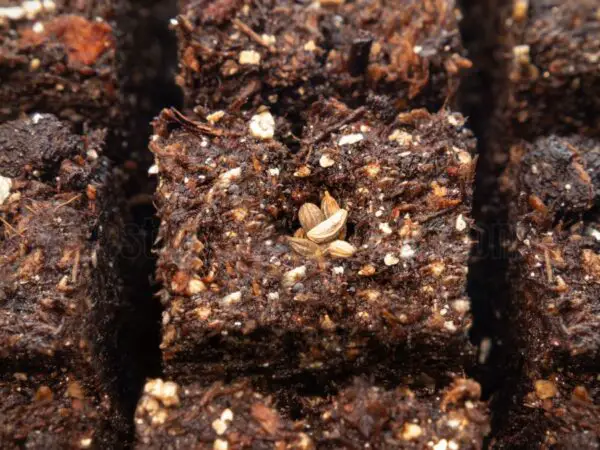How to Prune Crepe Myrtle Trees? Pruning crepe myrtle trees is crucial for maintaining their beauty and health. Proper pruning enhances blooms, encourages robust growth, and prevents disease. In this guide, we will provide you with expert tips and techniques to ensure your crepe myrtle thrives, showcasing its vibrant colors year after year. Whether you’re a seasoned gardener or a beginner, our step-by-step instructions will help you achieve the best results for your landscape.
Crepe myrtle trees are popular ornamental plants known for their stunning summer blooms and vibrant foliage. Pruning these trees involves removing dead or overgrown branches to promote healthy growth and enhance flower production. Timing and technique are essential for successful pruning, ensuring your crepe myrtle remains beautiful and robust throughout the seasons.
Are you ready to transform your crepe myrtle trees into stunning focal points in your garden? Our comprehensive guide covers everything from the best pruning techniques to the ideal timing for trimming. By following our expert advice, you’ll create a thriving landscape filled with vibrant blooms. Don’t miss out on these valuable tips!
How to Prune Your Crepe Myrtle
Importance of Proper Pruning
Pruning my crepe myrtle is like giving it a spa day. It’s all about keeping it happy and healthy. Snipping away broken, damaged, or diseased limbs is my way of showing a bit of tough love. By ditching those pesky sucker growths and cluttered branches, I’m making sure my tree not only breathes easy but blooms like it’s got something to prove. And let's be real, the neighbors are going to be jealous of my yard's new look!
Timing and Best Practices
For me, mid-February is pruning time. With the leaves gone, it’s like peeling back the curtain and getting a full view of what needs trimming. Doing this in late winter is a little life hack—it can keep the cold from biting my tree and might even dial up the floral fireworks come summer.
Here’s the scoop on how I handle the pruning gig:
| Pruning Actions | Best Timing | Tips |
|---|---|---|
| Snip broken or damaged branches | Mid-February | I always give my pruning shears a good scrub first! |
| Shape the tree | Late Winter | Let the tree’s natural beauty do the talking |
| Avoid chopping for height control | After new growth | Pick out three to five main trunks, if needed |
These are kind of like my cheat codes for a beautiful crepe myrtle—keeping it sleek and chic without going overboard on the height chopping. Pruning, done right, is an art form, and I'm basically Picasso with a pair of shears.
Pruning Techniques for Crepe Myrtle
So, I'm onto the crepe myrtles. These beauties need a bit of a haircut now and then if they're going to look their best and bloom like champs. If you're like me and want to keep them looking sharp, here's how I handle it.
Thinning and Shaping
When it comes to thinning, it's all about making sure those branches aren't getting all tangled up like spaghetti. I chuck out the branches that crisscross or jam up the middle so air and sunlight can do their thing. A good rule? Make sure your main trunks are spread out nicely, showing off that pretty, multi-colored bark underneath.
And lemme tell you, snipping off those skinny limbs (think thinner-than-a-pencil ones) works wonders for that polished vibe. It’s like giving it a haircut that not only looks fab but helps it grow stronger too.
Branch Removal Guidelines
Now, cutting branches isn't just about which ones to chop; it's knowing how not to mess up the tree's mojo. I'm careful at the top – cutting too much there can weaken the whole thing over time.
| Branch Size | What to Do |
|---|---|
| Thinner than pencil | Snip away |
| Weak or dead | Chop 'em |
| Crowded center | Thin it a bit |
Avoid the dreaded "crape murder" – no one wants a sickly tree covered in stumpy bits and bugs feasting away. Best practice? Start gently, working upwards, taking out the unwanted branches at ground level.
Avoiding Common Mistakes
Looking back, I'd say steering clear of over-pruning saves a ton of headaches. I mean, once upon a time, I thought I'd tidy up by lopping off the tops. Wrong move! What I got was sad, stubby sticks and no gorgeous blooms. So now, I'm all about picking three to five main trunks and leaving the rest be. This lets the tree breathe and bounce back to its beaut self.
Getting my pruning game right means my crepe myrtles stay strong and stunning. Understanding what not to do has been just as important as knowing what will make them shine.
Tools for Pruning Crepe Myrtles
Pruning crepe myrtles can be quite satisfying, especially when you've got the right tools in your arsenal. It's like giving your trees a health boost and a style update all in one go!
Essential Gardening Tools
For getting those crepe myrtles looking sharp, I rely on a trusty set of tools:
| Tool Type | What's the Deal? |
|---|---|
| Bypass Pruners | Perfect for cutting smaller stems and branches, these babies work like scissors to make clean cuts. Keeps your plant looking fresh and healthy. Kozeny's Lawn Service |
| Loppers | Need to tackle those medium-sized stems? Loppers give you extra muscle to handle thicker growth without breaking a sweat. |
| Pruning Saw | When branches go big, the pruning saw comes in. It saws through thicker parts with ease, but don't try it on twigs unless you want a workout. |
| Hedge Shears | Use these to give your myrtle a neat trim, shaping smaller sections until they look picture-perfect. |
| Gardening Gloves | Your hands will thank you—keeps them safe from scrapes and cuts while you're doing your pruning dance. |
With these tools, I turn my pruning sessions into a successful makeover. Each tool helps sculpt my crepe myrtle into a healthy showstopper.
Tips for Tool Maintenance
Tool TLC is crucial if you want them to stay in top shape. Here’s how I keep mine ready for action:
- Clean Tools After Use: I make sure to give my tools a bath with some soapy water or disinfectant after each use. This way, I don't pass on plant illnesses like they're the latest gossip.
- Sharpen Blades Regularly: A sharp blade makes as much sense in gardening as it does in cooking—smooth cuts are the way to go. So, I keep my blades sharp, sharpening them at the season's start.
- Oil Moving Parts: A drop of vegetable or light machine oil keeps everything running smoothly, without any rusty surprises.
- Store Properly: I tuck them away in a dry, cozy spot away from moisture. This keeps them rust-free and ensures I don’t have to play hide and seek when it's pruning time.
By showing my tools some love, I ensure they’re always ready to jump in and help my crepe myrtles shine like they should.
Pruning Single-Trunk Crepe Myrtles
Pruning crepe myrtles is like giving them a little tree makeover—except without the nail polish. It's a neat trick to make them grow better and look snazzier. I've got my own tried-and-true clipping magic that keeps my tree looking superb.
Selecting a Leading Trunk
The first magic trick up my sleeve is picking out that main trunk. This part's like choosing the star of a show—you want one that stands tall and proud. I look for a trunk that's as straight as a ruler and in tip-top shape. If there are any extra little shoots poking up from the ground like nosy neighbors, they get the boot. Those extras try to hog the tree's goodies, and we don't want that, do we?
| Action | Why It Matters |
|---|---|
| Boot out unwanted stem extras | Stops those nutrient hogs |
| Send suckers packing | Focuses growth where it matters |
| Choose a single superstar trunk | Keeps the tree strong and proud |
Starting young is key—older trees aren’t as keen on changing their ways. I make it my mission to snip off any side branches competing with the star trunk so it gets plenty of sun and fresh air.
Removing Unwanted Growth
Next up in my tree spa day is kicking out growth that doesn't belong. This is where I give my tree the health boost it deserves. I play tree stylist, ditching side shoots and branches that aren't doing the main trunk any favors.
I've also got my eagle eyes on the lookout for those pesky suckers. If they start popping up around the base, they're gone in a flash. This keeps things looking neat and means the tree isn't wasting energy in the wrong places.
| Growth Type | What I Do About It |
|---|---|
| Side branches | Prune to focus on the star trunk |
| Suckers | Remove for a streamlined look |
| Rival trunks | Eliminate for a strong single trunk |
By sticking to these pruning steps, I help my crepe myrtles hit their stride and flaunt their beauty. With some regular love and timely trimming, these trees are the stars of my yard show.
Pruning Multi-Trunk Crepe Myrtles
Ah, crepe myrtles — my pride and joy in the garden. These beauties need a bit of care, especially with nurturing their main trunks and removing those pesky suckers and seed clusters. It's like giving them a spa day to keep them in tip-top shape.
Maintaining Main Trunks
I've made it my mission to keep those main trunks healthy. A sturdy trunk means the tree stands tall and showcases gorgeous blooms. So, while I'm pruning, I kick out any weak or crossed branches that think they can steal the spotlight from the center stars.
Avoid hacking those trees down to stubs—what some call 'Crape Murder'. Trust me, you don't want to go there. It's not just mean but also leads to short, tired blooms and sad little branches (NC State Extension). I prefer to give them a gentle trim to boost their growth while keeping their stunning shape intact.
| Pruning Task | Purpose |
|---|---|
| Remove weak branches | Give strength to main trunks |
| Thin dense canopies | Get that air moving |
| Avoid heavy topping | Promote healthy growth |
Pruning Suckers and Seed Clusters
Those suckers — I swear they pop up overnight! They like to take away from the main show, so I regularly snip them off. It keeps the tree's energy focused on what truly matters—the main trunks.
For top-notch sucker removal, I make sure to snip them close to the ground. This way, the tree's base stays damage-free, and the shape is as fancy as ever. At the end of the blooming season, I gather those seed clusters and prune them away. It's like tidying up after a party, making way for next year's flower fiesta.
| Sucker Pruning Task | Best Practice |
|---|---|
| Cut close to the base | Make clean cuts |
| Trim during dormant season | Stress-free is the way to be |
| Maintain overall shape | Keep it looking sharp |
By keeping up with these simple gardening hacks, my multi-trunk crepe myrtles reward me with breathtaking blooms annually. It's all about showing them some love, making sure their trunks are robust, and evicting those energy-sapping suckers. With a little effort, these trees thrive, transforming my garden into a floral wonderland!
Avoiding 'Crape Murder' and Mistakes
Understanding Over-Pruning
Whenever I think about grooming my crepe myrtle trees, the phrase "Crape Murder" looms in my mind. Yep, we're talking about over-pruning here, folks. This not-so-sweet mistake can seriously mess up the tree's health and appearance. Imagine chopping off the tops of the branches or going all Edward Scissorhands on its height—ends up with unsightly stumps and flimsy shoots that can't bear the pretty blooms. Instead, I dial it back a notch and focus on thinning out some branches while steering clear of giving my tree an extreme haircut (Southern Living).
Here's my go-to list to keep those crepe myrtles looking sharp:
| Pruning Action | Effect |
|---|---|
| Thinning branches | Encourages solid, healthy growth |
| Cutting lower limbs smaller than pencil size | Keeps things neat and uncrowded |
| Drastic topping | Ends in awkward stumps and feeble growth |
Going for a bare-trunk look? Not my style! It messes with bloom time and delays flowers, so I'm all about that gentle touch to keep my trees thriving (NC State Extension).
Proper Pruning for Tree Health
For me, good pruning equals happy, healthy crepe myrtles. That means ditching the over-pruning habit and keeping my shears as sharp as my wit. Dull blades can wound the trees, paving the way for illnesses nobody wants (Kozeny's Lawn Service).
Here's my rulebook for happy pruning:
| Pruning Tip | Description |
|---|---|
| Start small | Begin with little branches to see if any major work's needed. |
| Keep it balanced | Trim just enough to boost growth without overdoing it. |
| Stay sharp | Use sharpened tools for clean cuts and less damage. |
Taking the time to master pruning these lovely trees truly pays off. With the right technique, my crepe myrtles bloom like little champs, bringing joy to my garden year after year. It’s all about making wise choices when pruning, so they stay the star of the garden show without falling victim to over-pruning pitfalls.
Final Thoughts
How to Prune Crepe Myrtle Trees: Key Takeaways Pruning crepe myrtle trees is vital for encouraging healthy growth and maximizing their beautiful blooms. By following the recommended techniques and timing, you can enhance your tree’s aesthetics and longevity. Remember, proper care not only beautifies your landscape but also ensures your crepe myrtle thrives for years to come.
FAQs about "How to Prune Crepe Myrtle Trees"
Q: When is the best time to prune crepe myrtle trees?
A: The best time to prune crepe myrtle trees is in late winter or early spring before new growth begins. This timing encourages vigorous blooming in the summer and helps the tree recover quickly from pruning.
Q: What tools do I need for pruning crepe myrtle trees?
A: Essential tools include sharp pruning shears for small branches, loppers for thicker branches, and a pruning saw for larger limbs. Make sure your tools are clean and sharp to prevent damage to the tree.
Q: How much should I prune my crepe myrtle trees?
A: Aim to remove no more than one-third of the tree’s height during pruning. Focus on dead or crossing branches, and thin out crowded areas to improve air circulation.
Q: Can I shape my crepe myrtle tree while pruning?
A: Yes! Shaping your crepe myrtle is encouraged. You can create a desired form by selectively pruning branches to encourage a balanced and aesthetically pleasing shape.
Q: What should I do with the pruned branches?
A: After pruning, you can compost the smaller branches or chip them into mulch. Larger branches can be used for firewood or discarded properly, ensuring no disease is spread.
Q: Will pruning my crepe myrtle affect its blooms?
A: Proper pruning will not negatively affect blooms; in fact, it can enhance them! Regular pruning encourages more vibrant and abundant flowers by promoting healthy growth and light exposure.
Image Source: Paid image from CANVA





